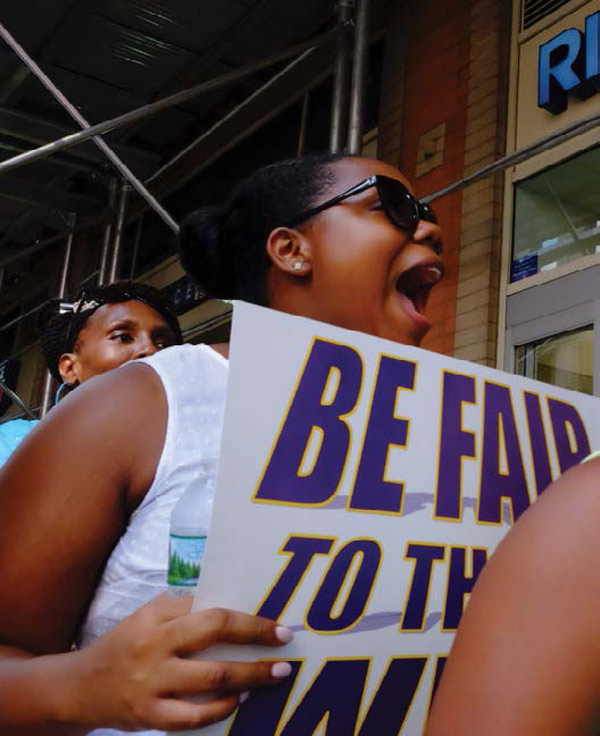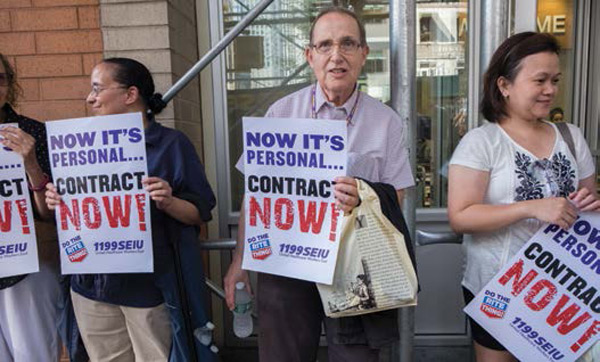MEMBERS STAND FIRM AGAINST RITE AID ASSAULT
October 19, 2016

“We’ve been willing to work with management, but they continue to lie and flip flop,” said Jamie Peters, an Astoria, Queens, Rite Aid front-end sales worker and member of the negotiating committee, after a September bargaining session. “We will not give up our benefits. We’ll continue to organize and educate.”
Members are insulted by Rite Aid’s concessionary demands, particularly in light of the company’s financial health. In a May 2016 letter to investors, Rite Aid CEO John Stanley wrote: “Fiscal 2016 was a successful, transformational and historic year for Rite Aid…. We increased revenue by nearly 16 percent – from $26.5 billion in fiscal 2015 to $30.7 billion this past year.”
Members contrast those profits to their paltry wages. More than 2,500 of them earn minimum wage. And more than 5,000 earn less than the $15 per hour low-wage workers have been demanding around the nation. Members also want to know why a company that is proudly reporting record profits to investors is at least $8 million in arrears to the 1199SEIU National Benefit Fund.
“If we accept Rite Aid’s terms, I could see our collective power weakened dramatically,” says Bryan Tong, a Fresh Meadows pharmacy intern and recent graduate of St. John’s University.

Tong says he’s concerned with what leaving the bargaining unit would mean for his future benefits, working conditions and pension. Tong notes management’s attempts to sow divisions between older workers and younger workers like him. “It’s important for young workers like me to get involved,” he stresses. “We represent the bridge to the future we’re trying to protect.”
Carlos Villalba, a cashier at a Rite Aid in midtown Manhattan, is another one of those delegates building bridges. He has compiled a list of more than 400 members he contacts regularly about contract developments and campaign issues.
“Management tries to convince members that the Union is not cooperating and is responsible for the potential loss of our benefits,” Villalba says. “I let them know that our problem is Rite Aid’s corporate greed,”
Villalba notes that Rite Aid’s strategy is to weaken the bargaining unit as a step towards eventually busting the Union.
“If they can bring in non-Union pharmacists, why would they continue to keep senior pharmacists to whom they have to pay more,” he says. “Their goal is to divide and conquer.”

